Hiroshi Mehata
Mehata Sentimental Legend
︎
visual sound artist
Tokyo, Japan
visual sound artist
Tokyo, Japan
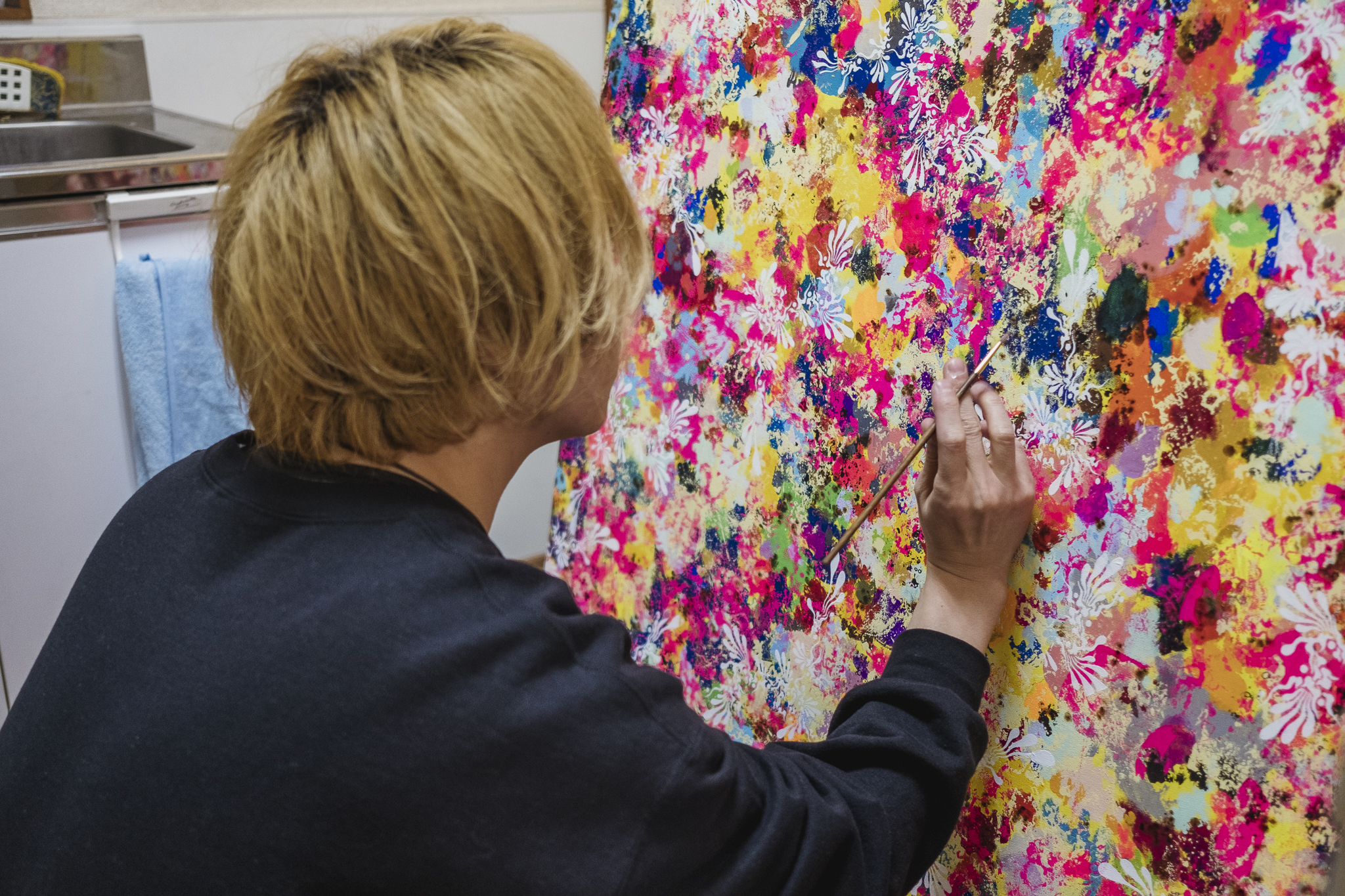
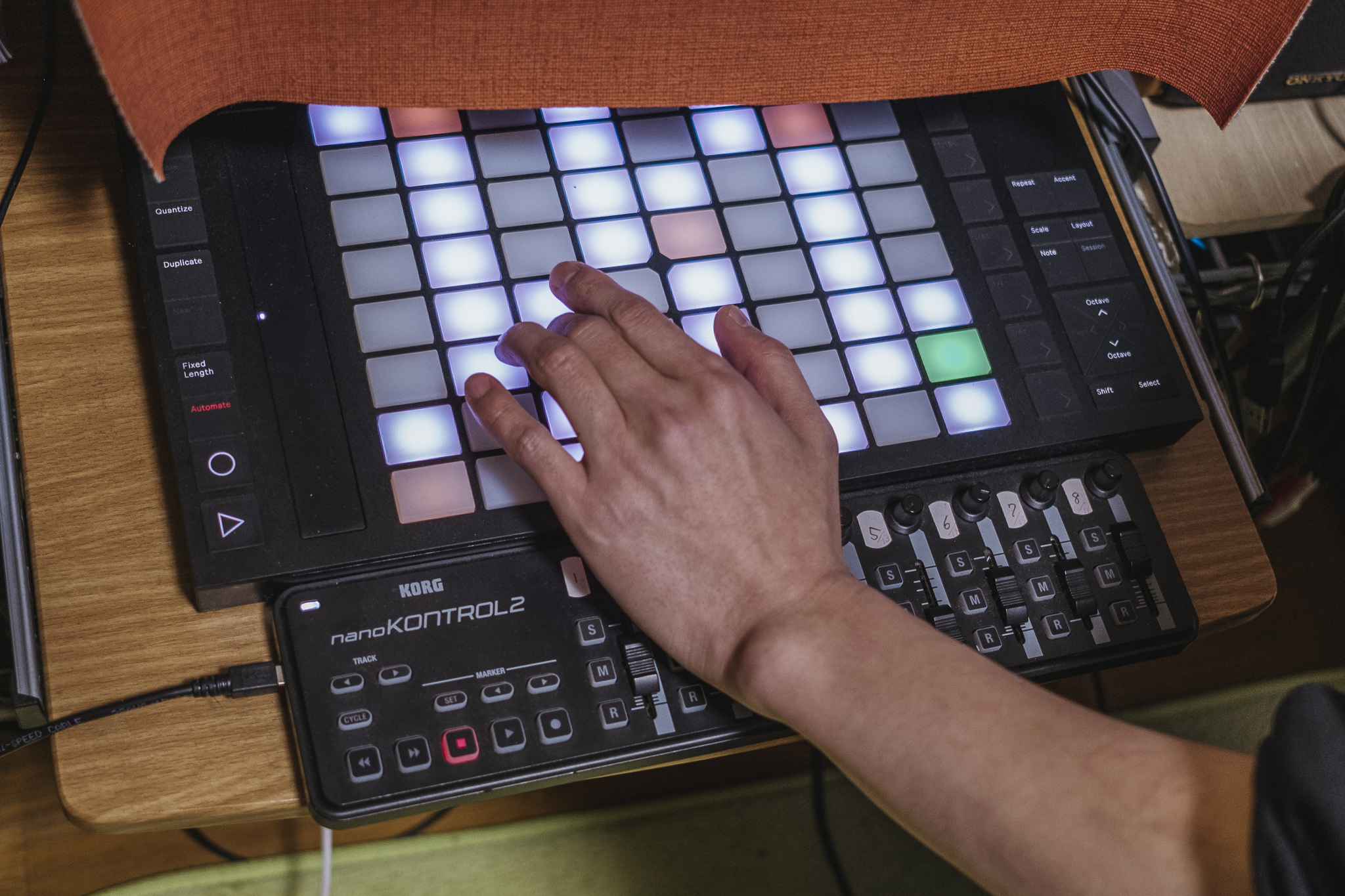
I MADE MY way to a small apartment in Eifuku, Tokyo, on a rainy January afternoon
to meet Hiroshi Mehata, a visual and sound artist as he prepared for his
exhibition later in the year.
While it is his bright visual pieces
that first drew me to his practice, Hiroshi views himself as a musician first
and insists that his final art pieces are merely an expression of his music in
visual form.
Hiroshi started as part of a punk rock
band, before going solo a decade ago as he began experimenting with the
possibilities of sound and music. He describes his process of making music as
accidental. Inspiration comes from everywhere: a chime on public transport or a
note of music from a TV drama. From a singular sound impression Hiroshi creates
ethereal soundscapes that are his way of exploring the subconscious depths and
transitory states of the mind.
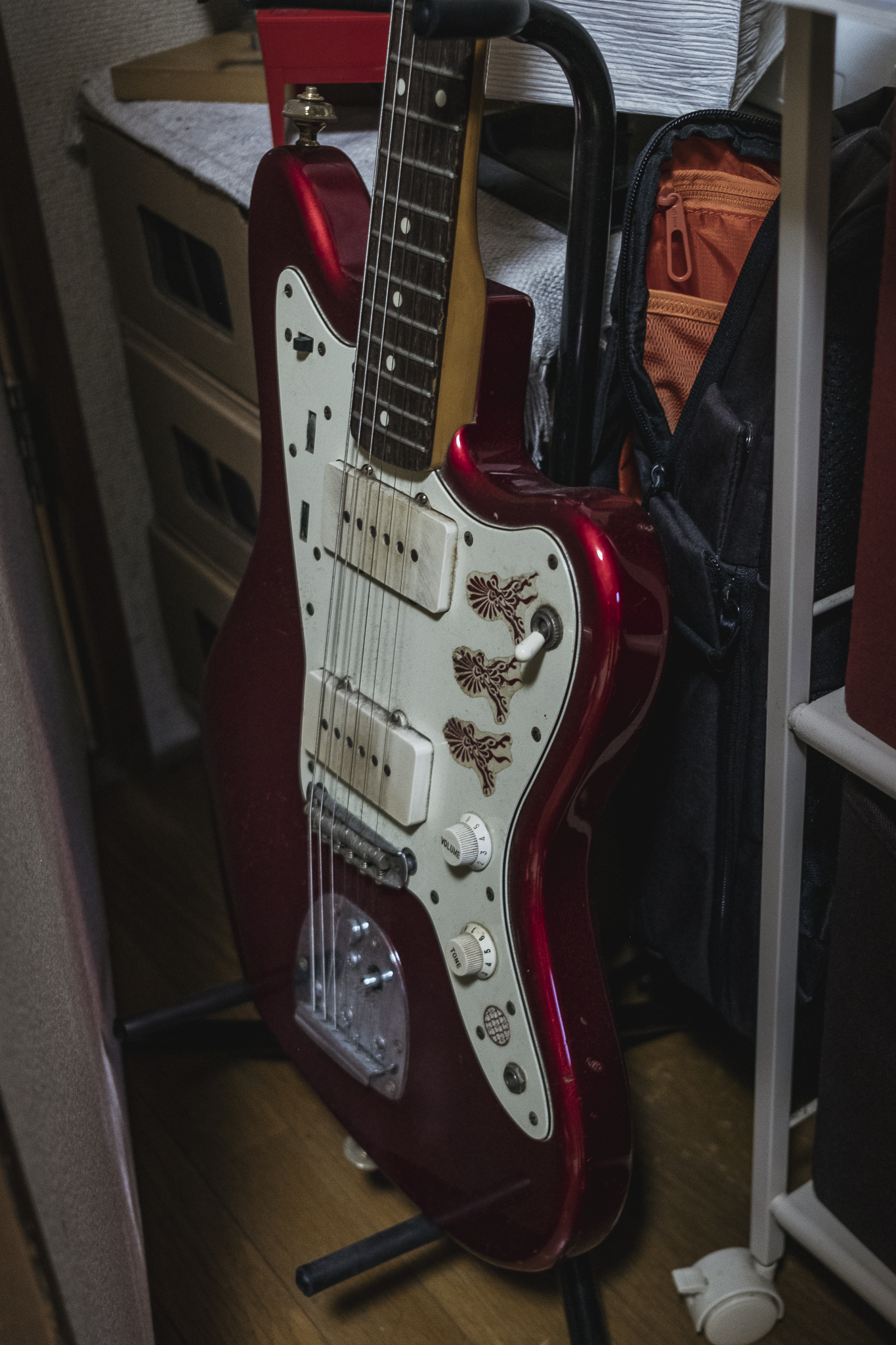
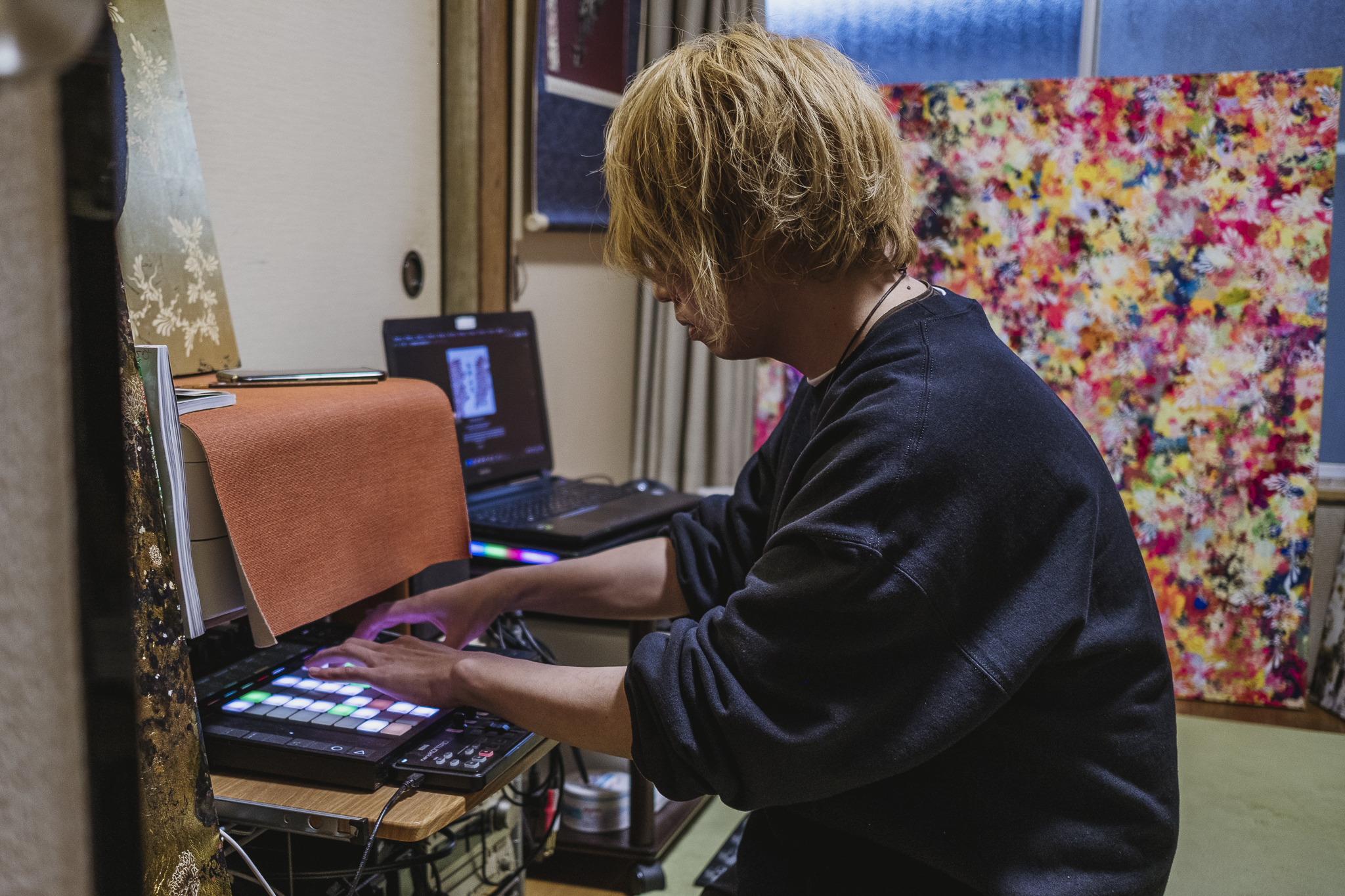
Hiroshi speaks of his music in dream-like, abstract terms. It fuses together elements of traditional Japanese
instruments with futuristic, psychedelic riffs. Hiroshi spoke very humbly about
coming to terms with the fact that his experimental sound will not be popular
in Japan, partly due to a strong emphasis on technicality and craftsmanship.
His view is that the community will benefit from a more open outlook, with less
gatekeeping. Nevertheless, he has found global fans, which has resulted in his
longevity and tours to Spain, America and other parts of Asia.
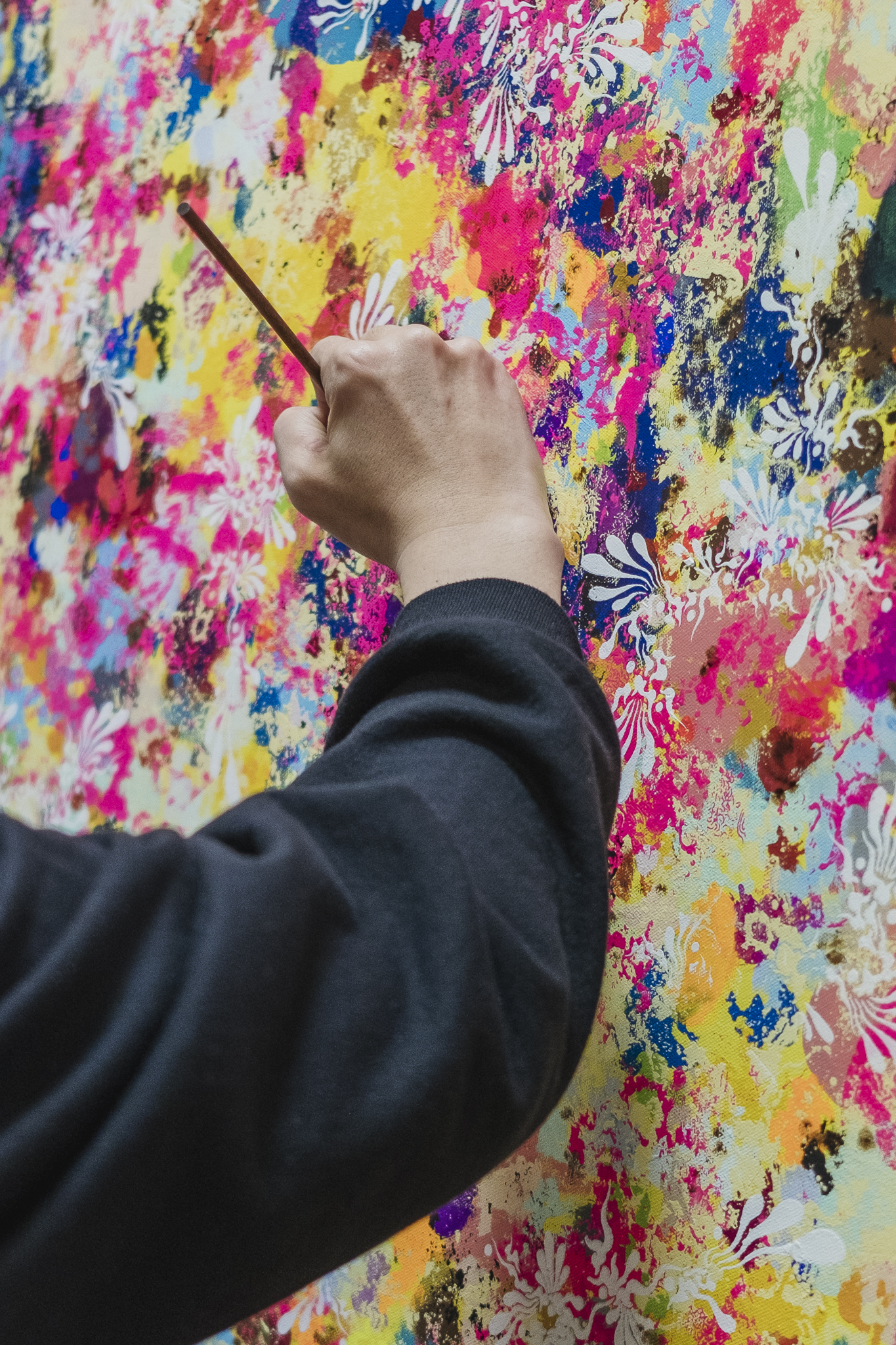
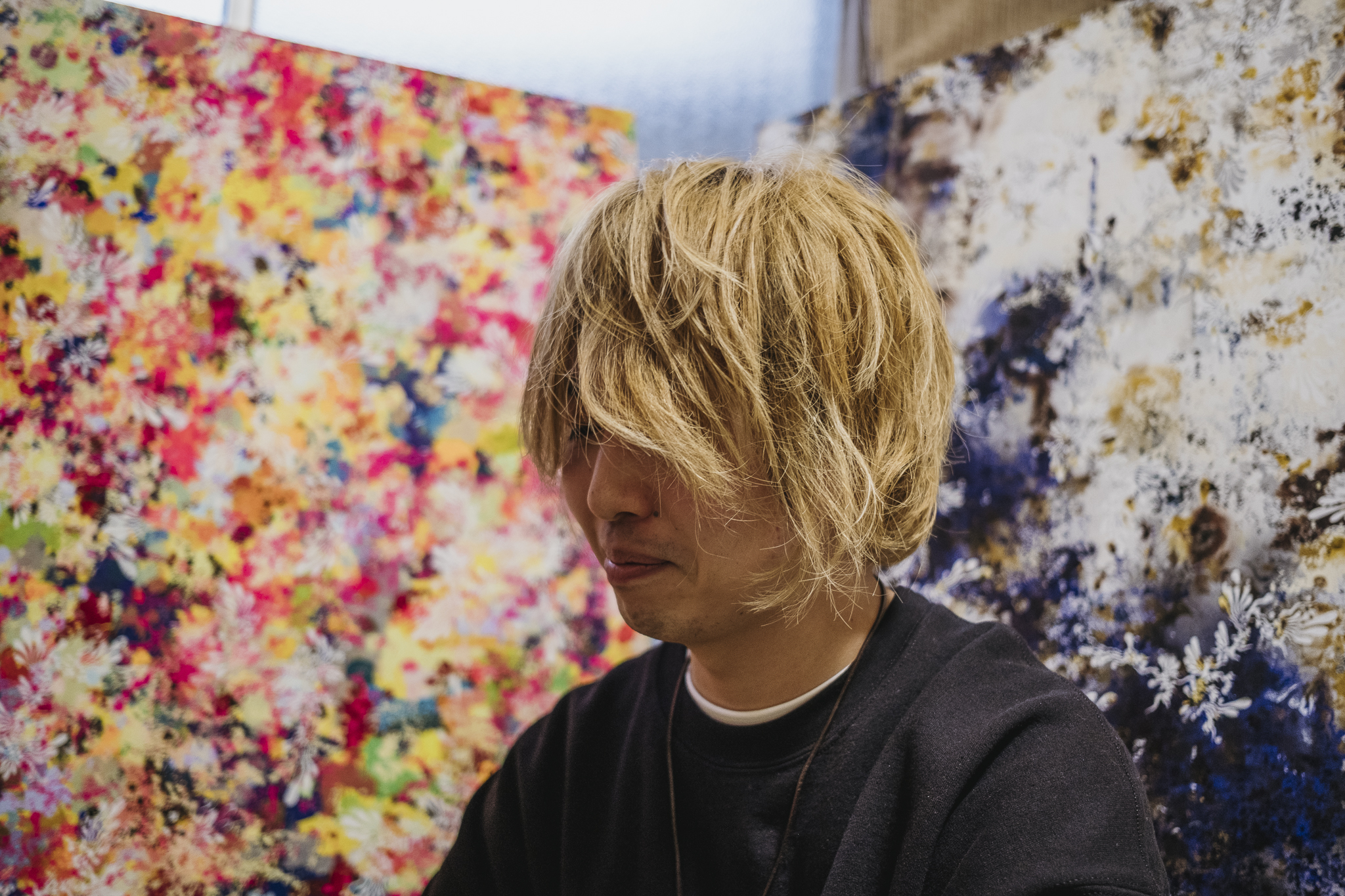
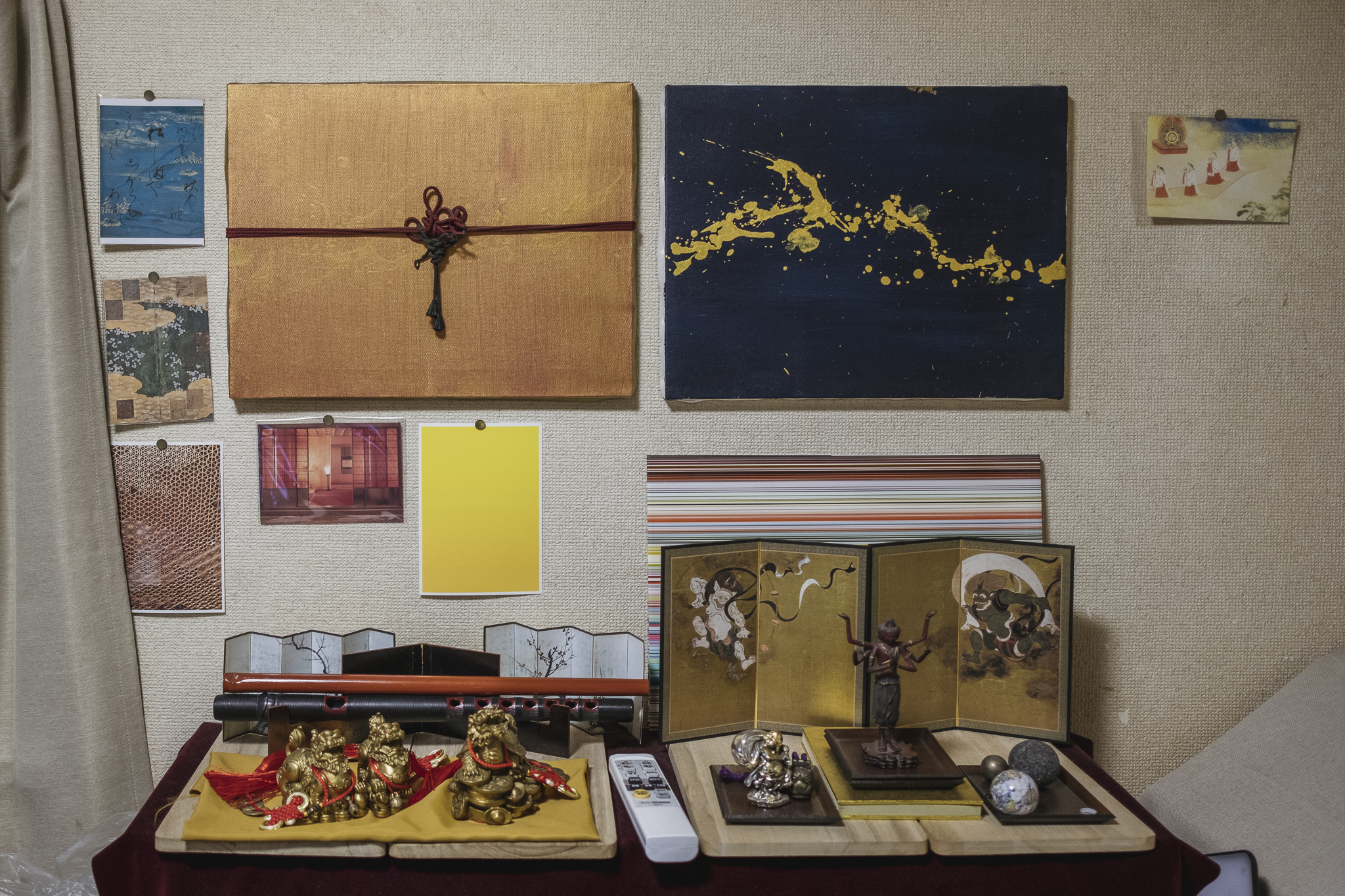

"Sometimes, depending on my mental state, I see colours when I hear music."
Hiroshi's music is the starting point
for his visual art. Just as with his music making process, his art is
experimental and meditative, as he attempts to visually represent his sound
through his paintings. The result is a energetic mob of colours, impressions
and shapes. Look closely and one might recognise motifs, colours and shapes
from traditional Japanese art, which Hiroshi intentionally pairs with his
music. For this reason, his artworks remind me of "Magic
Eye" books, and I found myself staring at the paintings in his home,
searching for a hidden illusion.
Over a decade ago, just on the cusp of
the rise of social media, Hiroshi recalls uploading his music online, including an accompanying album jacket of his own design. This attracted the
attention of a fellow artist in America who recommended that he create art
concurrently with his music.
Hiroshi explained that it was this chance online aquaintance and his piece of advice that led to him continue producing imagery. Hiroshi laughs when he tells me that it is difficult for him to be recognised as a musician in Japan, but the scene is more accepting of him as a visual artist.
Hiroshi explained that it was this chance online aquaintance and his piece of advice that led to him continue producing imagery. Hiroshi laughs when he tells me that it is difficult for him to be recognised as a musician in Japan, but the scene is more accepting of him as a visual artist.

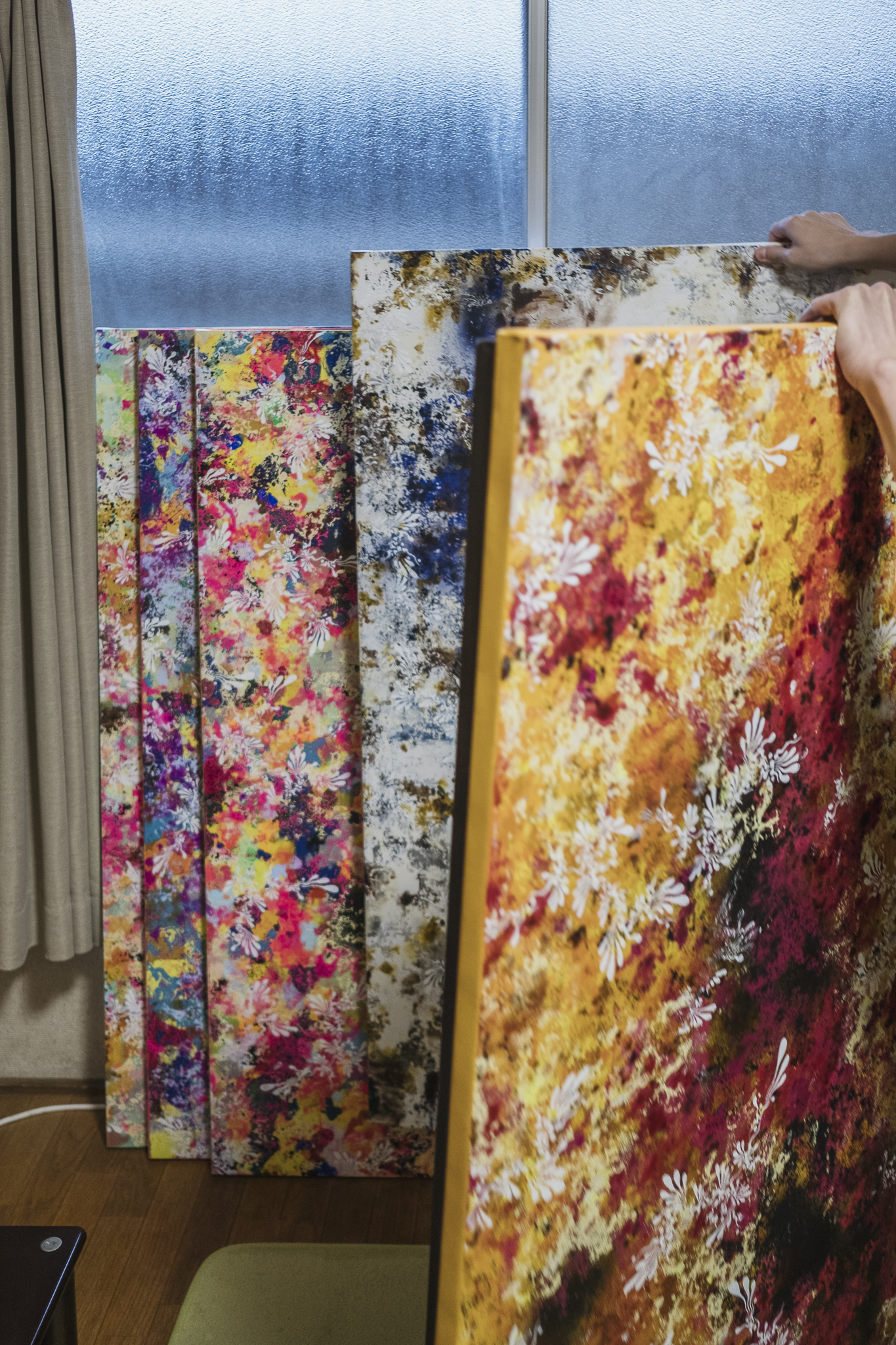
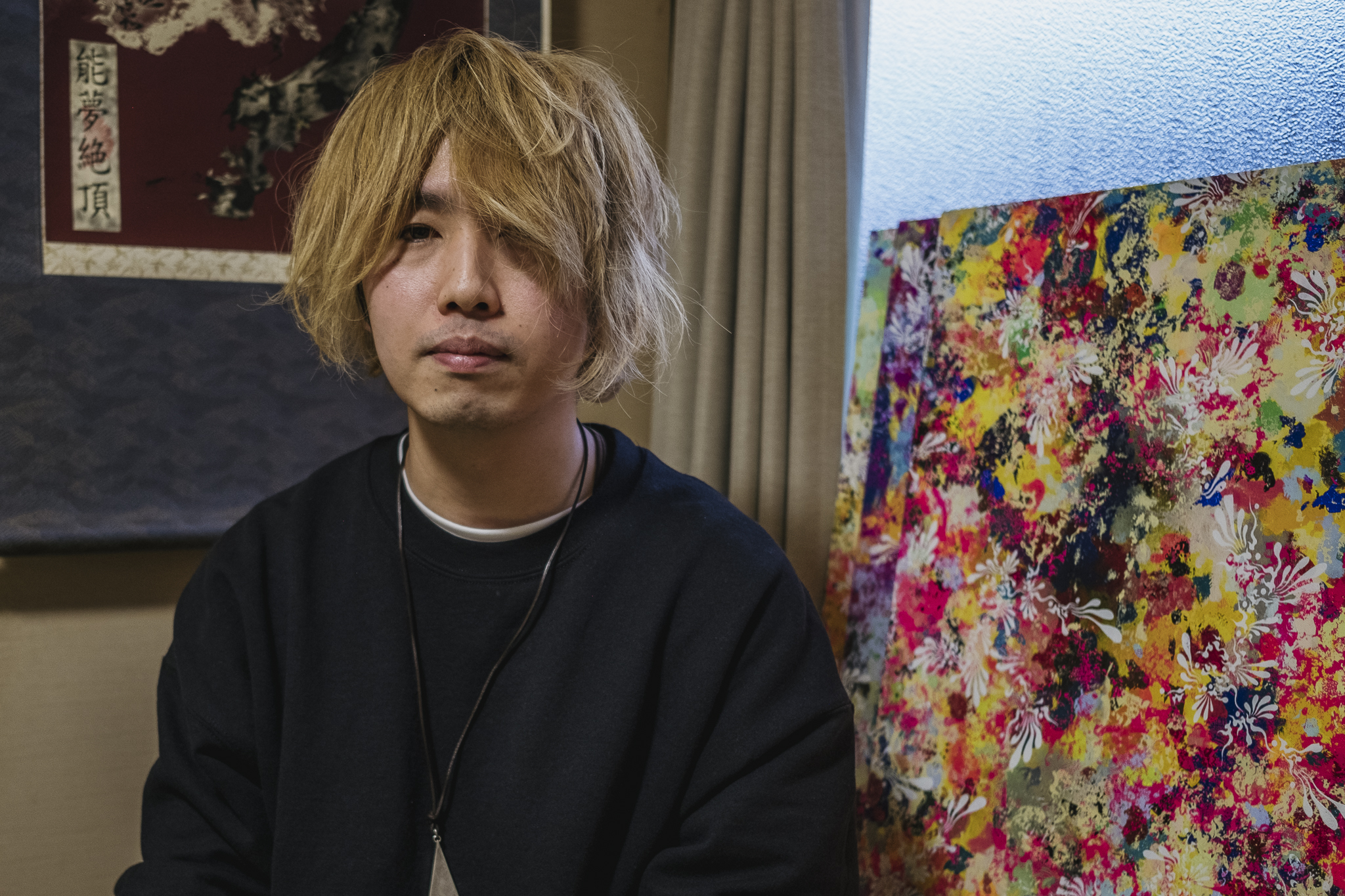
"My main ambition [in life and in art] is not specific. I just want to be more free."
Without noticing, a couple of hours passed as Hiroshi and I spoke about his art practice and his worldview. You’ll notice that in the photos Hiroshi’s face is partially obscured from view. He told me that despite his decades of performing his music on stage around the world, he was still not used to having his photo taken. It’s almost like he takes on a totally different persona, one that is expressive and more free.
Since our meeting in January, Hiroshi
held his first exhibition in seven years, ‘The Color Cleanser‘ in Yogyakarta,
Indonesia. The large number of visitors prompted organisers to extend the
exhibition. For the exhibition, Hiroshi paired his paintings with his
music, using an app that converted the colour values of his images into sound,
making it a unique experience.
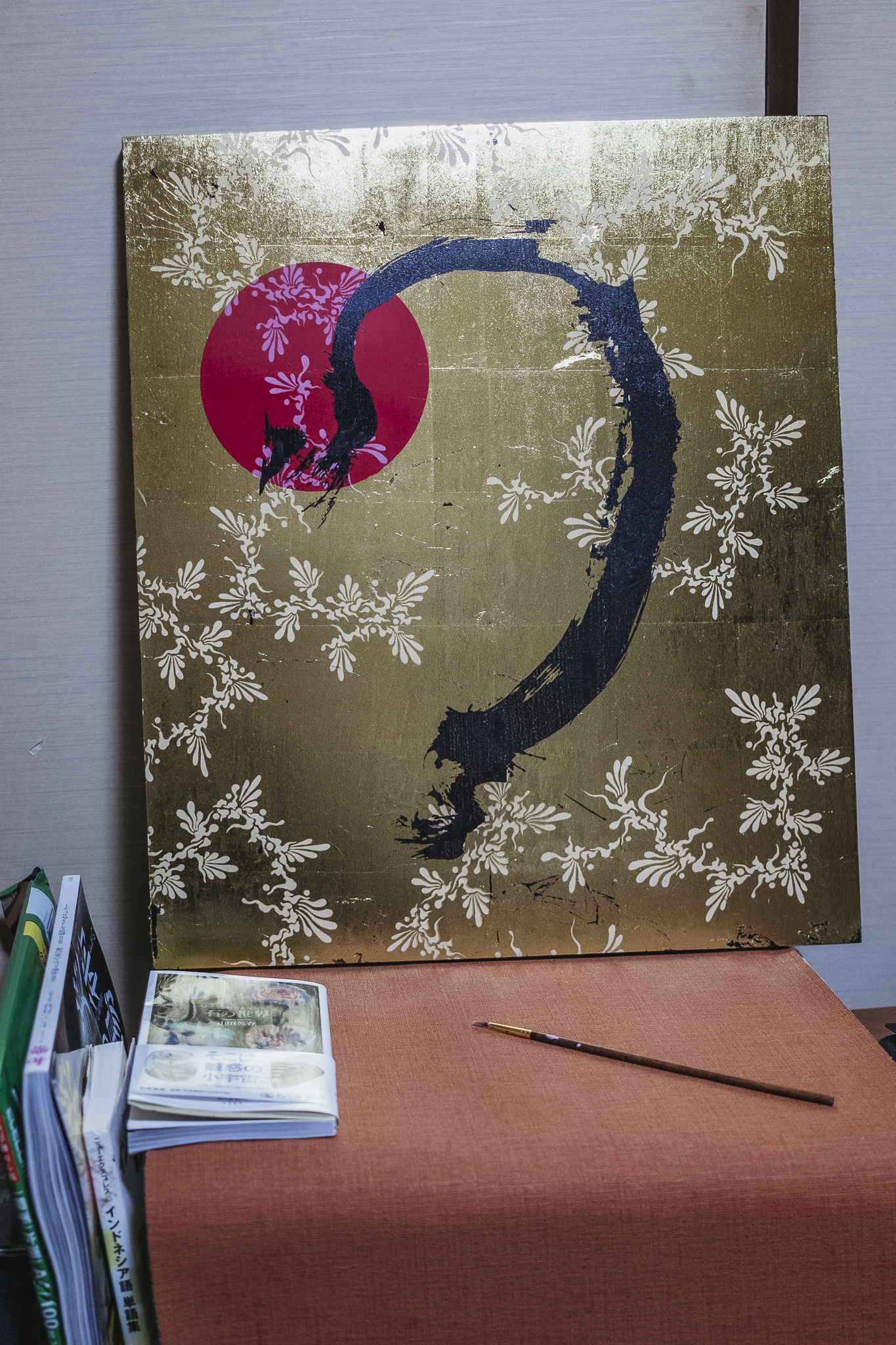
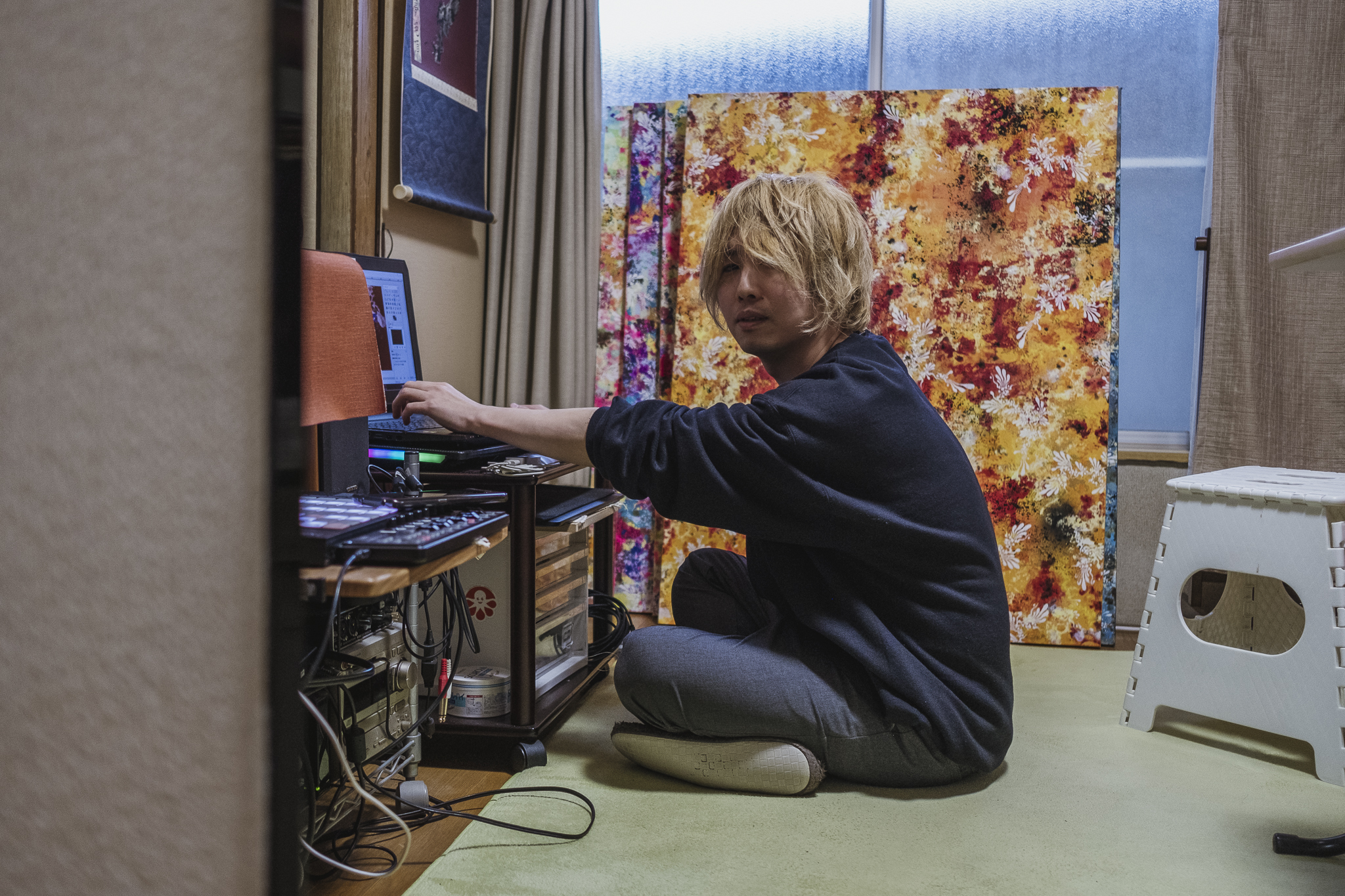
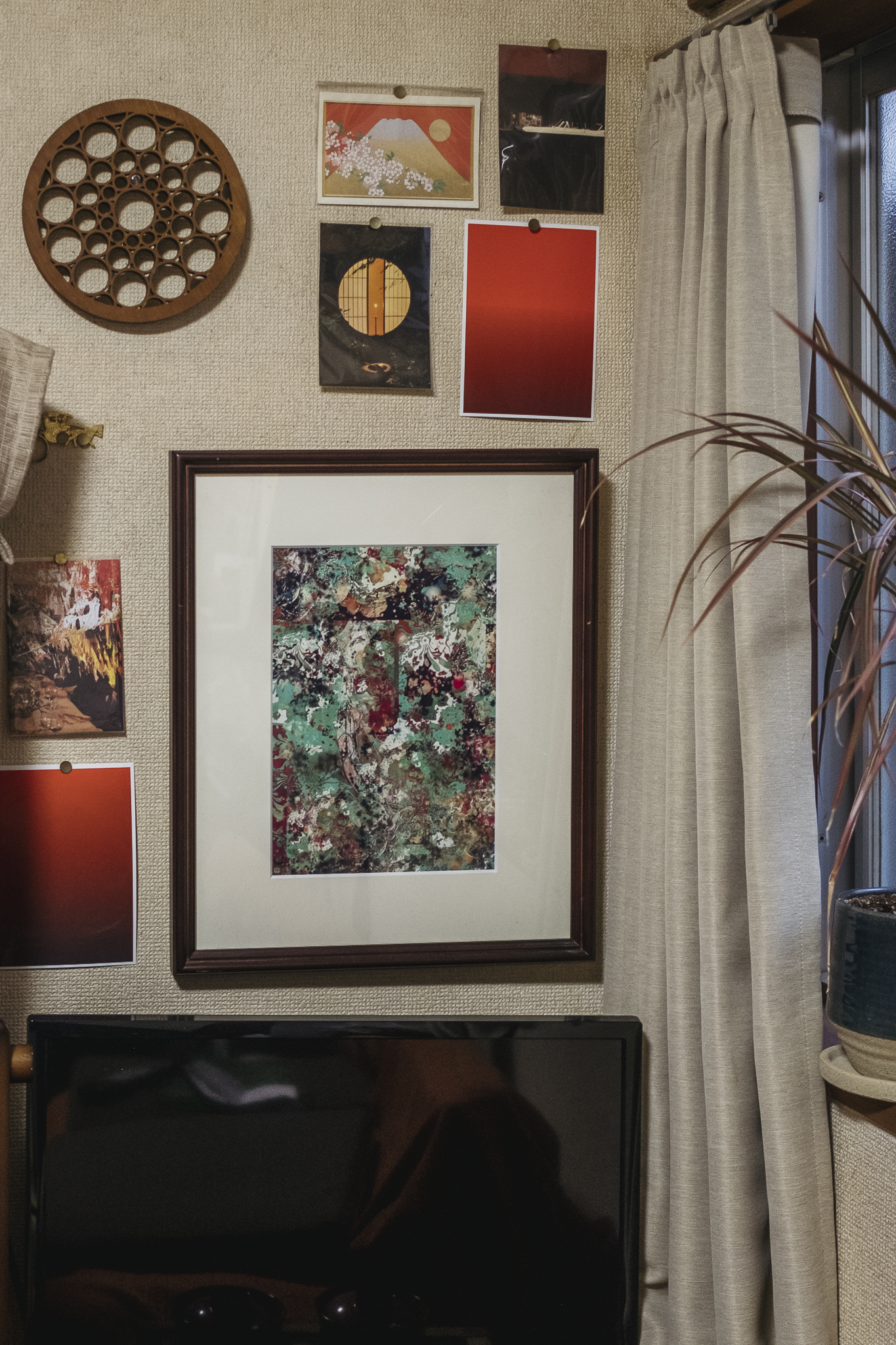
Follow:
Hiroshi Mehata
Mehata Sentimental Legend
https://www.mehatasentimentallegend.com/
https://www.instagram.com/hiroshimehata/
https://open.spotify.com/artist/3grs4lTtgPnuvVNglAk1Ha
︎
Visited January 2023, published August 2023.
Hiroshi Mehata
Mehata Sentimental Legend
https://www.mehatasentimentallegend.com/
https://www.instagram.com/hiroshimehata/
https://open.spotify.com/artist/3grs4lTtgPnuvVNglAk1Ha
︎
Visited January 2023, published August 2023.